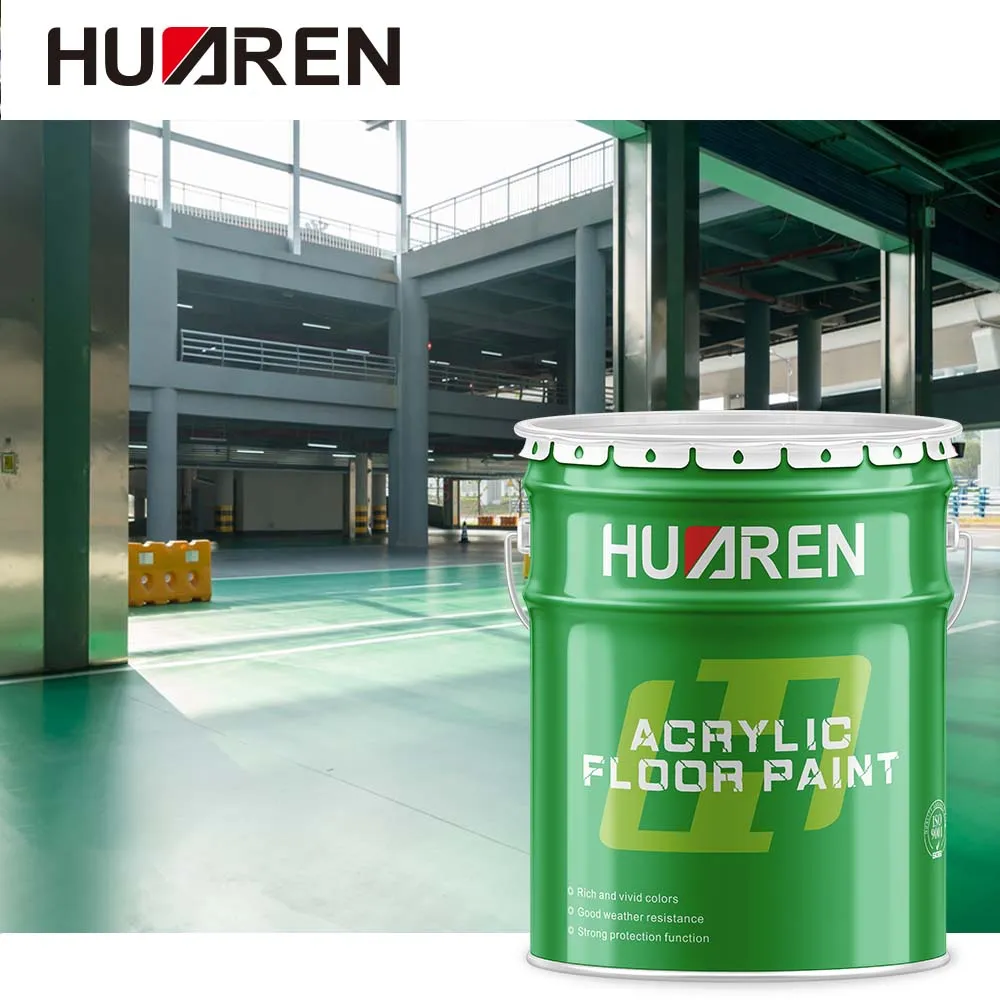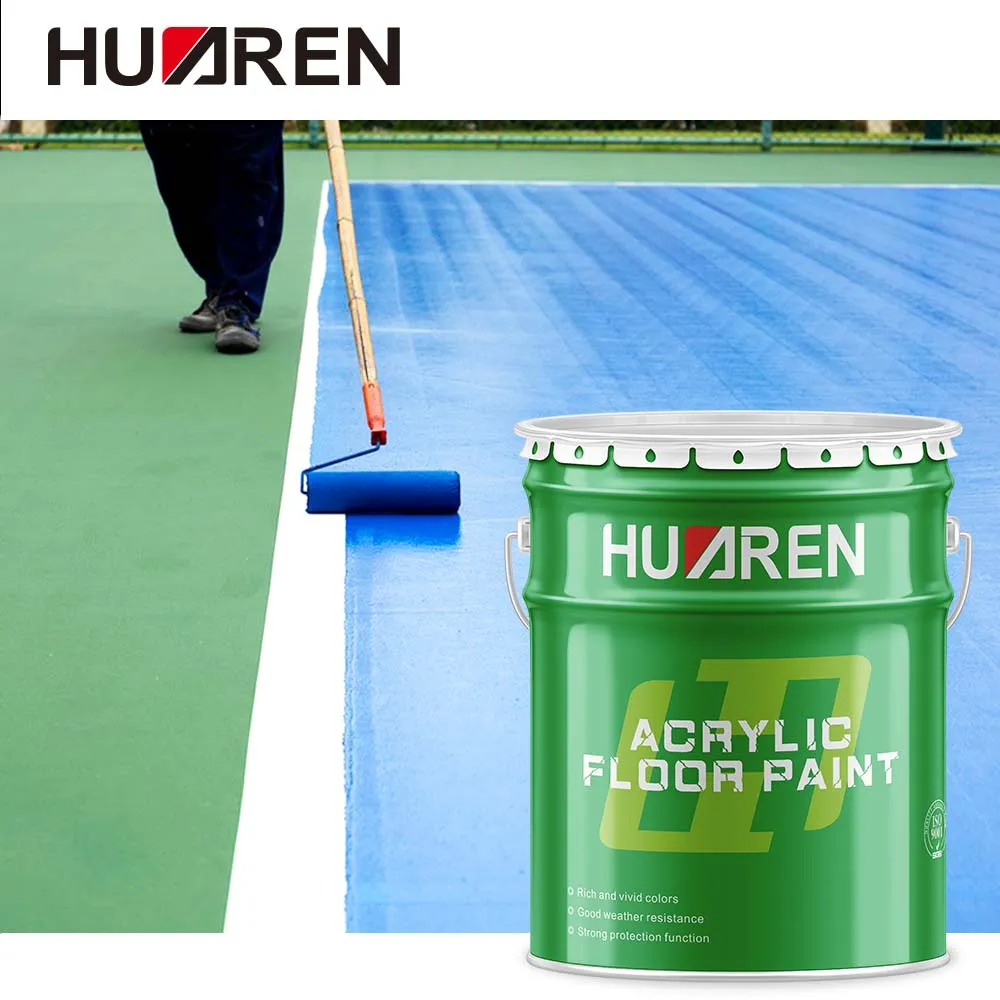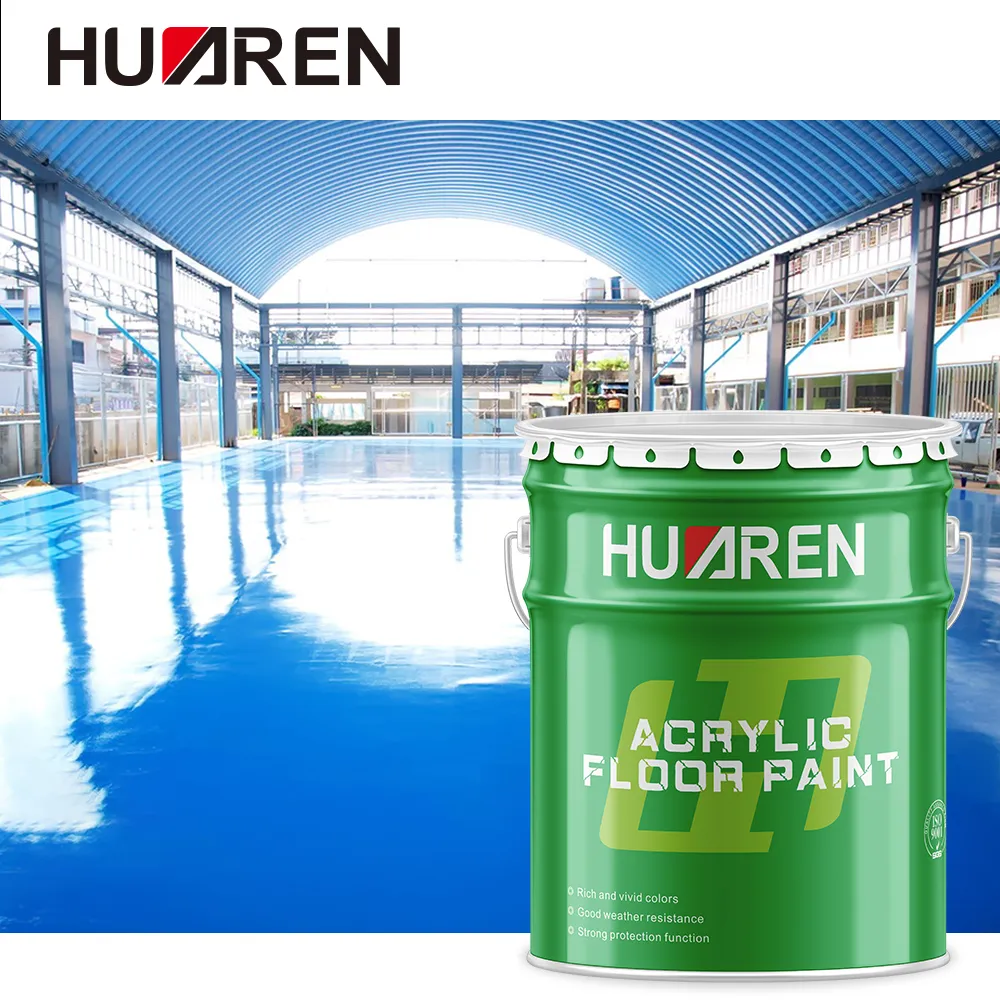In house renovation and floor maintenance, the protection and beautification of concrete floors have always been a focus of attention. Over time, concrete floors are susceptible to wear, peeling, cracking, and other forms of damage, which not only affects the appearance of the floor, but may also affect its service life. In order to extend the life of concrete floors and improve their appearance, many homeowners and professionals will choose to use paint to protect and decorate the floor.
Among them, acrylic paint is favored for its durability and versatility. So, is acrylic paint suitable for concrete floors? This article will explore this question in depth.

What is acrylic paint?
Acrylic paint is a water-based paint made of acrylic resin, which is known for its excellent performance and wide range of applications. It is commonly used for coating surfaces such as walls, ceilings, floors, etc. inside and outside buildings, and has good adhesion, weather resistance, chemical corrosion resistance, and wear resistance. Acrylic paint also has environmentally friendly characteristics and low VOC (volatile organic compound) content, so it is more friendly to the environment and human health.
What are the characteristics of acrylic paint?
The characteristics of acrylic paint make it an ideal choice in many application scenarios, especially in environments that require high durability and weather resistance. First, acrylic paint is widely used because of its strong durability. It can effectively resist the erosion of weather, UV radiation, moisture and chemicals, extending the service life of the coating.
Second, this coating can adhere well to a variety of surfaces, including concrete, masonry, wood and metal. For concrete floors, acrylic paint can penetrate deep into the tiny pores of concrete to form a strong coating. Acrylic paint is also highly resistant to a variety of chemicals, including grease, salts, acids and alkalis. This makes it particularly suitable for use in environments that are susceptible to chemical erosion, such as garages, industrial plants, etc.
In addition, acrylic paint has excellent wear resistance and can withstand high-frequency friction and trampling without easily wearing off or peeling. Therefore, it is particularly practical in high-traffic areas such as sidewalks, porches and garages. The most important thing is that acrylic paint offers a variety of color and gloss options, which can be customized according to different design needs. Whether it is a matte, semi-gloss or high-gloss coating, specific visual effects can be achieved to enhance the beauty of concrete floors.

Is acrylic paint suitable for concrete floors?
When faced with the maintenance and renovation of concrete floors, acrylic paint is considered an ideal choice. Especially in cases where concrete porches and sidewalks are worn, acrylic paint can effectively repair and protect these areas. However, whether acrylic paint is suitable also depends on the specific floor condition and the desired effect.
Common Problems with Concrete Floors
Concrete floors are widely used in residential and commercial buildings because of their durability, especially in areas such as garages, basements, porches and sidewalks. However, over time, concrete floors may experience the following common problems:
1. Surface wear: Long-term use and frequent friction may cause the surface of concrete floors to wear away, forming small pits and scratches. These flaws not only affect the appearance of the floor, but may also cause further damage.
2. Peeling and cracking: Peeling and cracking of concrete are common in old floors, especially after years of thermal expansion and contraction, moisture penetration, and heavy pressure. Cracks and spalling not only affect the structural integrity of the floor, but also become a channel for moisture penetration, further exacerbating the damage to the floor.
3. Fading: Concrete floors may fade when exposed to sunlight and weather conditions, losing their original bright colors and becoming dull.
How effective is the application of acrylic paint on concrete floors?
Acrylic paint is a good choice for the above concrete floor problems due to its low gloss and high durability. For example, acrylic paint has excellent covering ability and can fill small cracks, potholes and other defects on concrete floors. Low gloss acrylic paint can reduce the reflection of the floor surface, making defects less noticeable, thereby improving the overall aesthetics. Secondly, acrylic paint forms a strong protective film on the concrete surface, which can prevent the external environment from eroding the concrete and reduce the risk of peeling and cracking. This protective film can also slow down the stress caused by thermal expansion and contraction, reducing the probability of concrete cracking.
In addition, acrylic paint has good UV resistance and can effectively prevent the floor from fading. Even after long-term exposure to sunlight, the color of the coating remains bright and not easy to fade. Due to the chemical resistance and wear resistance of acrylic paint, it can resist the erosion of grease, chemicals and frequent wear and tear, so that the floor can remain in good condition in an environment with high traffic and frequent mechanical friction.
Finally, the surface of the floor coated with acrylic paint is smooth, dirt and dust are not easy to adhere, and it is easier to clean and maintain. Just regular sweeping and proper cleaning can keep the floor clean and beautiful.

What are the key points of acrylic paint application?
When painting concrete floors, correct construction steps are essential. Here are the basic construction points of acrylic paint in concrete floor applications:
Surface preparation:
Before applying acrylic paint, the surface of the concrete floor must be thoroughly clean. All dust, oil, loose particles and other impurities must be removed. If there are cracks or potholes on the ground, they should be repaired with suitable filling materials to ensure that the surface is flat.
Primer treatment:
For some cases, especially when there are many flaws on the ground or adhesion needs to be strengthened, it is recommended to use a primer. The primer can further improve the adhesion of acrylic paint and provide a better base for the paint to be applied more evenly.
Paint application:
Acrylic paint can usually be applied with a brush, roller or spray gun. The first coat of paint should be thin and even to ensure that every corner can be covered. After the paint is dry, a second coat can be applied to increase the thickness and durability of the coating. Pay attention to weather conditions during construction and avoid painting in high humidity or extreme temperatures to avoid affecting the quality of the coating.
Drying & Curing:
Although acrylic coatings dry quickly, they usually take more than 24 hours to fully cure. During this period, avoid walking on the floor or placing heavy objects on it to avoid affecting the hardness and uniformity of the coating.
As a leading supplier and manufacturer in China, Huaren Chemical Industry Co., Ltd. has been providing high-quality industrial coatings and resins since 1994. With 30 advanced production lines and a capacity exceeding 20,000 tons annually, we offer a diverse range of products, including water-based paints, phenolic coatings, and heavy-duty corrosion-resistant solutions. Our paints are widely used in industries such as construction, machinery, and petrochemicals, offering reliable performance and durability. We provide factory-direct prices, wholesale discounts, and tailored quotes to meet the needs of buyers worldwide. Serving regions like Africa, Southeast Asia, and Europe, we are dedicated to delivering quality products and excellent customer service. Contact Huaren Chemical today to purchase premium coatings with competitive pricing and promotional deals.

